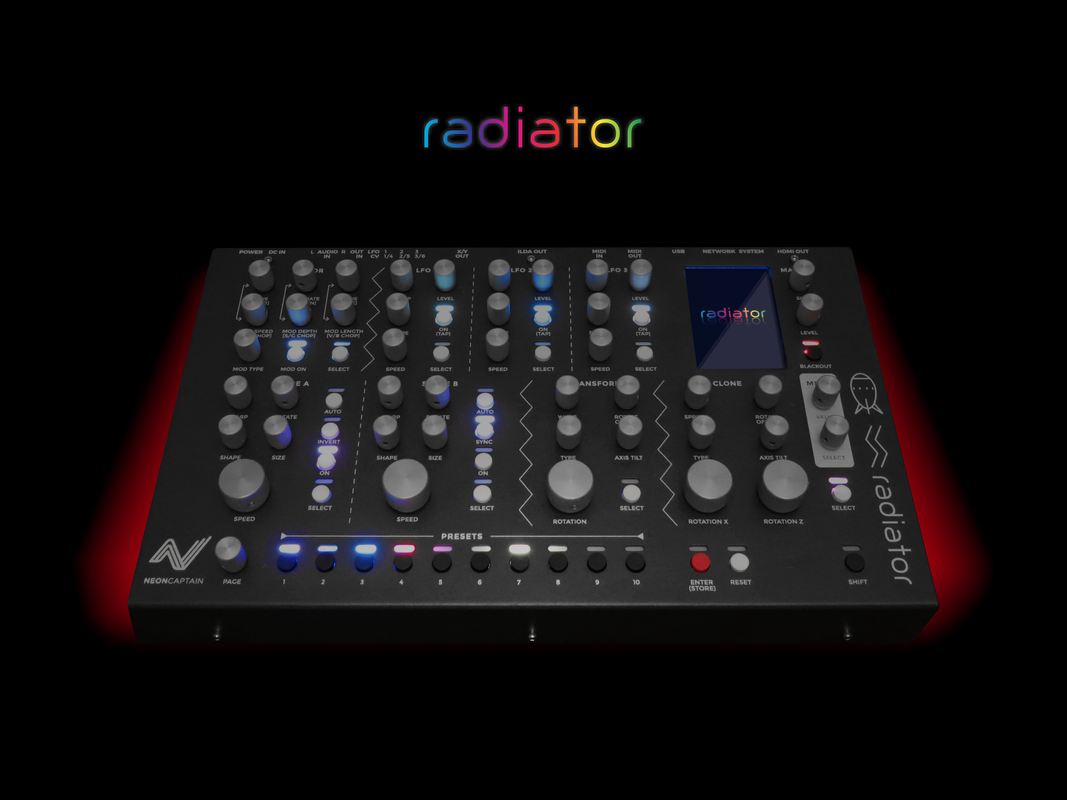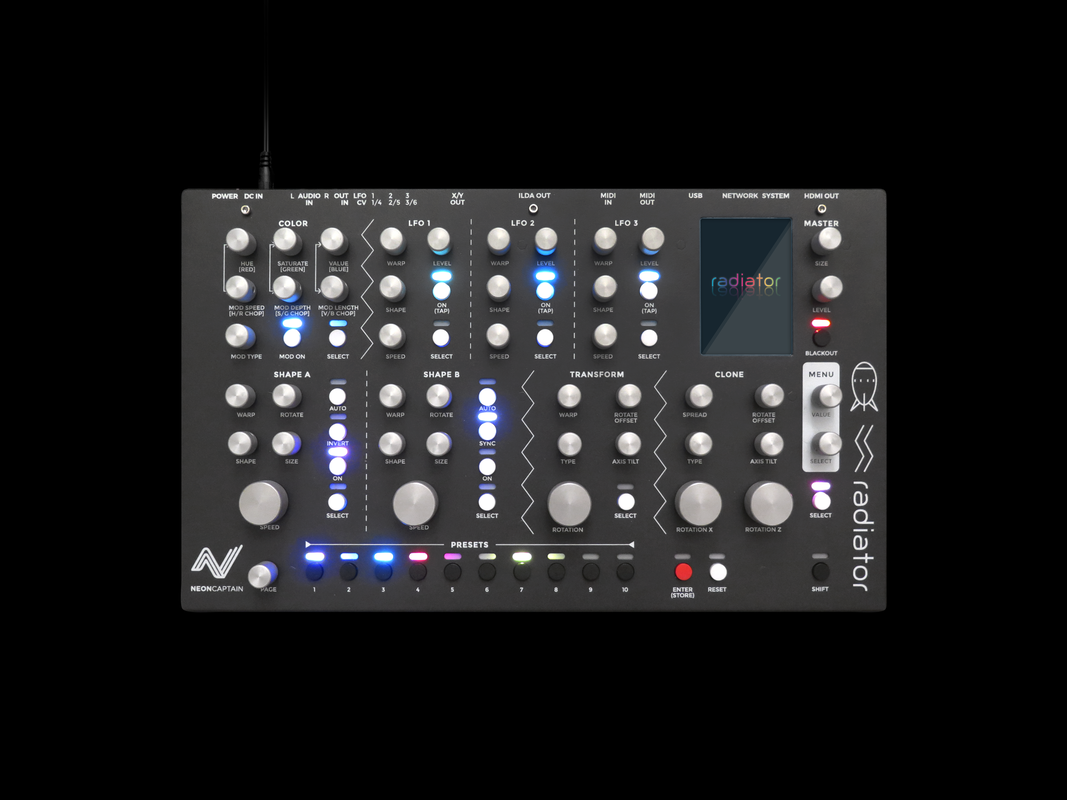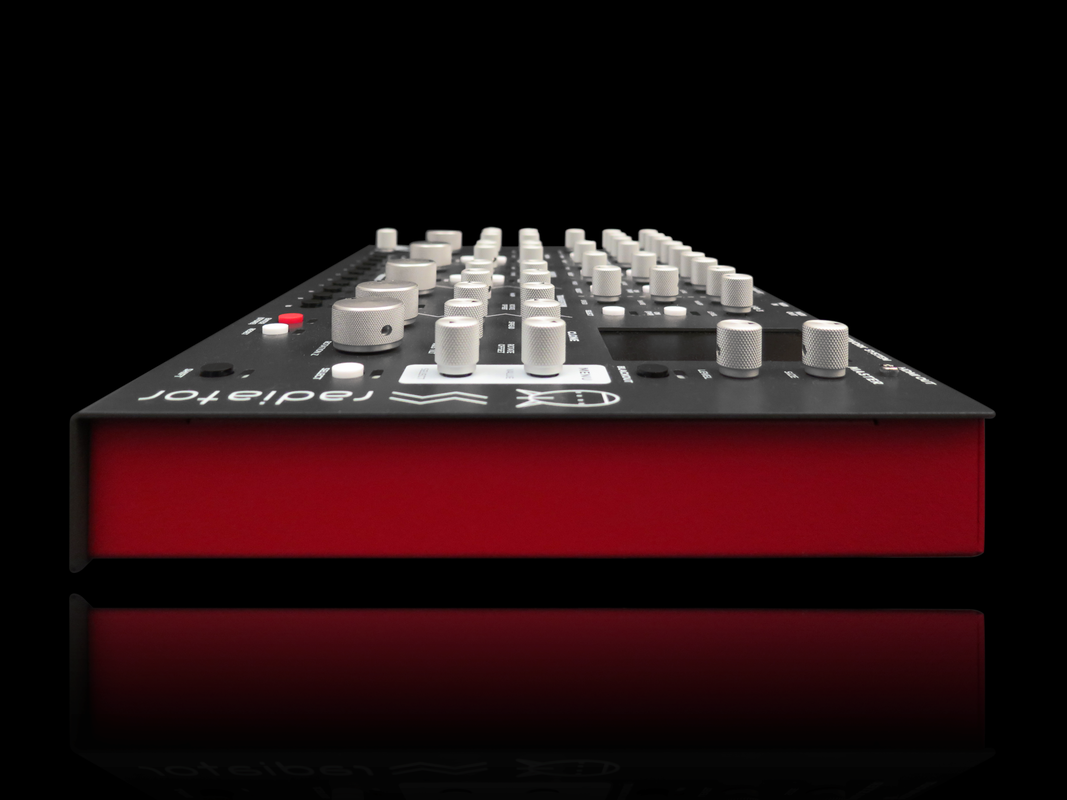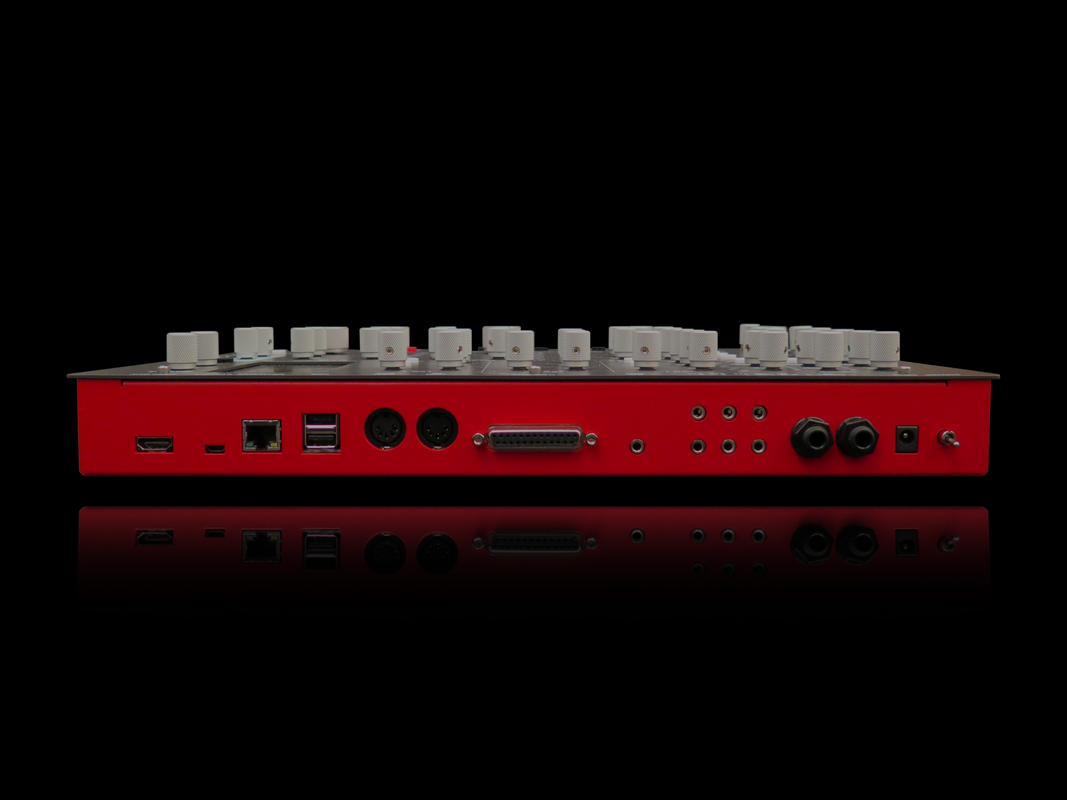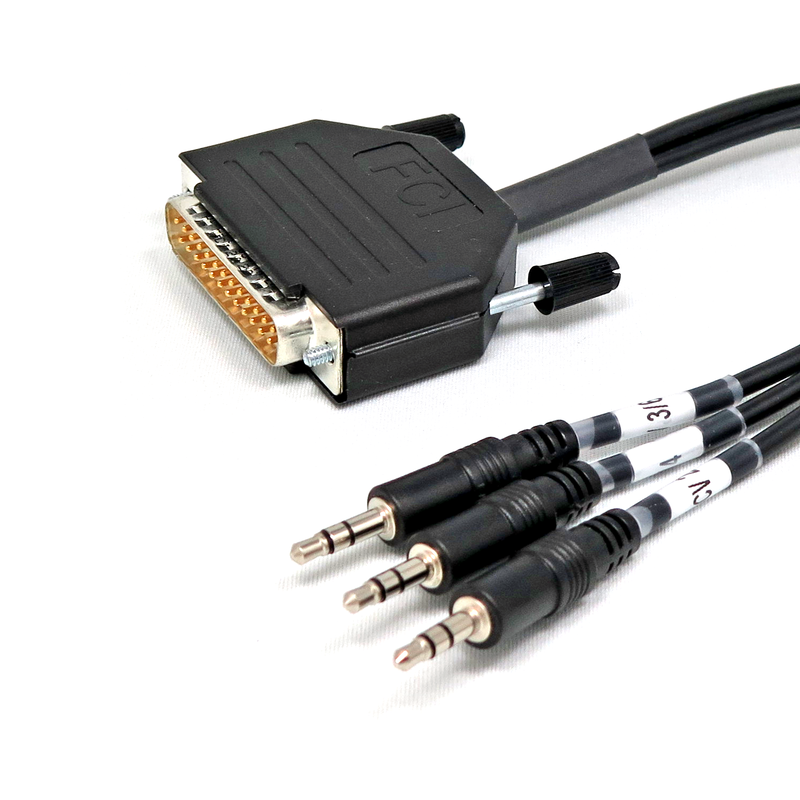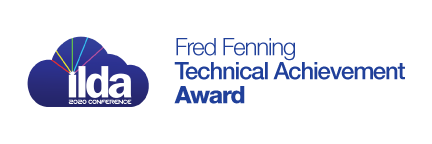Radiator Documentation and Software
Radiator System Update
Users with systems running package version 1.100 or earlier require a system image update to continue benefiting from software updates.
Please contact us by email for instructions on installing the latest system.
Users with systems running package version 1.100 or earlier require a system image update to continue benefiting from software updates.
Please contact us by email for instructions on installing the latest system.
NEW ARRIVAL
Radiator ILDA to CV Cable
|
Radiator now supports ILDA input which allows any ILDA laser source to be processed using the various modules within Radiator. Warp, spin, twist and existing ILDA content. By using the ILDA In mode in one or both Shape generators you can input a standard XYRGB laser signal and use it as a shape source within any Radiator patch.
The ILDA to CV cable contains a male DB-25 plug that can be connected to an ILDA laser DAC, another Radiator or your own analog console. There are three 1m stereo minijack cables that feed into the CV jacks on Radiator. Only the hot signals are used so sources must be ground-referenced. Radiator supports standard ILDA signal levels and has 24kHz of analog bandwidth for ILDA inputs. Price: $50 USD This cable is built and shipped by our sister brand: Kilpatrick Audio |
Back at the dawn of the laser show industry in the 1970s, laser shows were mainly controlled by skilled operators called Laserists, usually coming from an arts or music background. Laserists would literally perform each show live, usually to a pre-recorded soundtrack. Each show was different, dynamic and exciting. Fans would attend the same show over and since each show offered a unique experience just like a live music performance.
But as computer technology evolved, laser shows became more automated and lost their spontaneous performance qualities. Instead of a skilled performer, the job of Laserists was mainly that of a technician tasked with running and maintaining the equipment.
Radiator aims to bring back the live performance aspect to laser shows and once again make the job of Laserist synonymous with performance artist.
But as computer technology evolved, laser shows became more automated and lost their spontaneous performance qualities. Instead of a skilled performer, the job of Laserists was mainly that of a technician tasked with running and maintaining the equipment.
Radiator aims to bring back the live performance aspect to laser shows and once again make the job of Laserist synonymous with performance artist.
We are Neon Captain!
Neon Captain is a team of four highly skilled and passionate artists and developers: laser artist Christopher Short, electronics expert Andrew Kilpatrick, designer QP Tharmviboonsri and 3D graphics programmer Jonathan Fuerth. We are located in the Santa Fe, Montreal and Toronto. We are combining our passion, skills and experience to bring our dream of an affordable live laser synthesizer to life!
Christopher Short is a laser artist from Santa Fe, New Mexico in the USA. He is an award-winning laser artist who has designed and built his own laser equipment and has produced laser shows that have been seen around the world. He is well-known and highly respected in the professional laser show industry.
Andrew Kilpatrick is a classically-trained musician who has been designing and building audio and music products professionally since 2008 under the Kilpatrick Audio brand. He is an expert in electronics design and embedded software. He is passionate about using technology to make better tools for artists.
QP Tharmviboonsri is a graphic/product designer and artist originally from Thailand and now based in Montreal, Canada. He designs products for Kilpatrick Audio, a well-known boutique brand of electronic musical instruments. He has over 15 years of experience as a visual artist and designer working in user interface design, advertising, print, web and branding.
Jonathan Fuerth is a computer geek based in Toronto, Canada. The radiator project has given him a great opportunity to collaborate with a long-time friend and further explore his interest in low-level graphics programming. And he has known since the age of seven that laser is spelled with an "s," not a "z."
Christopher Short is a laser artist from Santa Fe, New Mexico in the USA. He is an award-winning laser artist who has designed and built his own laser equipment and has produced laser shows that have been seen around the world. He is well-known and highly respected in the professional laser show industry.
Andrew Kilpatrick is a classically-trained musician who has been designing and building audio and music products professionally since 2008 under the Kilpatrick Audio brand. He is an expert in electronics design and embedded software. He is passionate about using technology to make better tools for artists.
QP Tharmviboonsri is a graphic/product designer and artist originally from Thailand and now based in Montreal, Canada. He designs products for Kilpatrick Audio, a well-known boutique brand of electronic musical instruments. He has over 15 years of experience as a visual artist and designer working in user interface design, advertising, print, web and branding.
Jonathan Fuerth is a computer geek based in Toronto, Canada. The radiator project has given him a great opportunity to collaborate with a long-time friend and further explore his interest in low-level graphics programming. And he has known since the age of seven that laser is spelled with an "s," not a "z."
We're social! Follow us & stay in touch
|
|
|
Get in Touch With Us
Any comments or questions? We'd love to hear from you!
Leave a message and we will get in touch with you shortly :) email: neoncaptain3@gmail.com Please sign up for our newsletter to get the first news of updates or new products!
|
|
We are so pleased to announce the International Laser Display Association (ILDA) has honored the Neon Captain Radiator Laser Synthesizer with a coveted Fred Fenning Technical Award. The Fred Fenning awards honor the greatest technical achievements in the laser display industry around the world that advance the industry. // November 22, 2020 //
|

